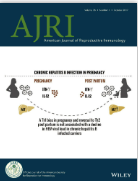Kuei-Yang Hsiao, Ning Chang, Jia-Ling Tsai, Shih-Chieh Lin, Shaw-Jenq Tsai, Meng-Hsing Wu
Abstract
Problem: How does hypoxia-mediated downregulation of dual-specificity phosphatase-2 (DUSP2) promote the development of endometriotic lesions?
Method of study: The levels of IL-6 and DUSP2 were assessed in eutopic stromal cells with DUSP2 knockdown or hypoxia treatment. Bromodeoxyuridine (BrdU) incorporation was applied for evaluating cell proliferation. The protein levels of DUSP2, cleaved caspase-3, phosphorylated STAT3, and STAT3 were analyzed using immunoblot.
Results: The genomewide analysis of cells with DUSP2 overexpression indicated IL-6 regulates multiple pathways related to inflammation, proliferation, and apoptosis. DUSP2 overexpression significantly suppressed IL-6 expression, while DUSP2 knockdown promoted IL-6 expression. The hypoxia-treated eutopic stromal cells expressed higher levels of IL-6, recapitulating the elevated levels of IL-6 in ectopic stromal cells. The treatment with IL-6 elicited the phosphorylation of STAT3, mimicking the elevated levels of phosphorylated STAT3 in the ectopic stromal cells. The IL-6-treated eutopic stromal cells showed more BrdU incorporation and less cleaved caspase-3, which can be reversed by STAT3 inhibitor.
Conclusion: Hypoxia-induced IL-6 production in endometriotic lesions is mediated via downregulation of DUSP2, which causes aberrant activation of STAT3 signaling pathway and helps the endometriotic cells survive under the ectopic environment.
Keywords: endometriosis; hypoxia, dual-specificity phosphatase-2; interleukin-6; signal transducer and activator of transcription 3.
Am J Reprod Immunol. 2017 Oct;78(4). doi: 10.1111/aji.12690. Epub 2017 Apr 25. PMID: 28440564.




